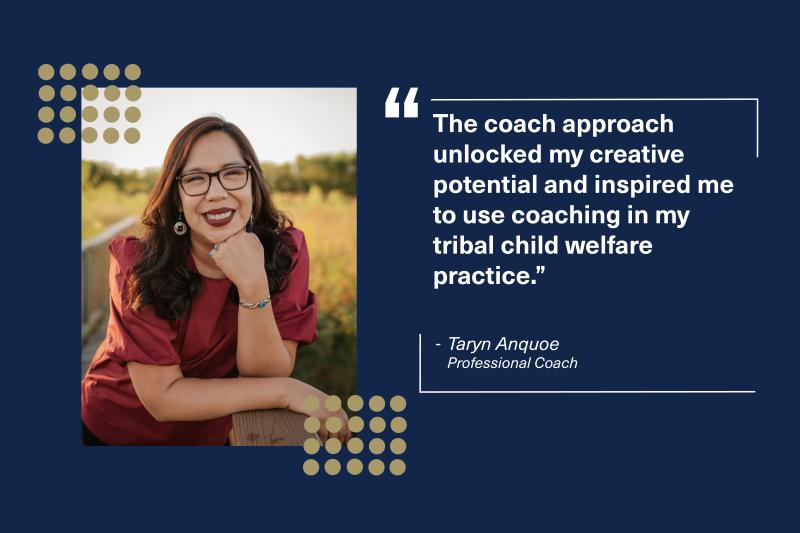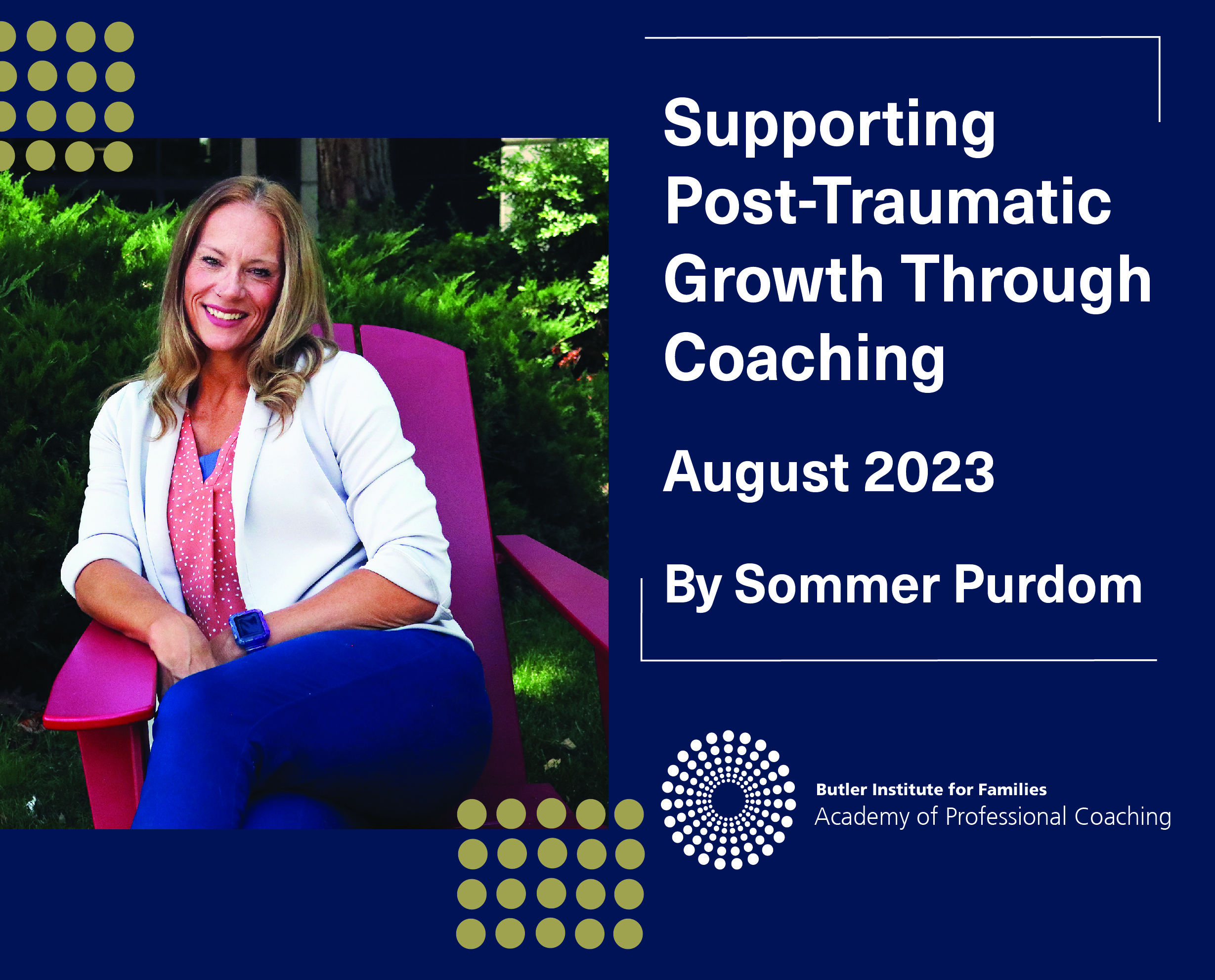Valerie Burton, founder of The Coaching and Positive Psychology (CaPP) Institute, describes the coach approach best when she says, “Coaching is moving people from where they are to where they want to be.”
A few years ago, while working as a tribal permanency case manager, a supervisor introduced me to the coach approach during one of the toughest seasons of my career. At the time, I was balancing a heavy caseload along with navigating new mom life. I found myself pushing harder against the workload, hopeful I would get to that quintessential work/life balance. Time felt limited as I tried my best to not work another late night or answer phone calls after 7 p.m. These were boundaries I had previously set but struggled to maintain. Even when I was not on call, dinners with my family started to feel rushed, and it was a struggle to leave my work phone at home. My story could have been written as a “role play scenario” in a self-care course or holistic coaching demo.
As you may have guessed, I was experiencing symptoms of secondary traumatic stress (STS), which, if left unchecked, tends to be a fast road to burnout in the child welfare field. I knew of the available resources and had immense support from my team and even an understanding spouse who never complained about my late work nights. Yet day after day, I came to the office feeling overwhelmed, tired, sometimes unmotivated, and often frustrated with what felt like failed case plans.
Meetings with my supervisor were always good connection points, but during this season of STS, I found myself venting to my supervisor about all the problems I was running into in my case planning. Rather than listening for feedback, I was waiting for my supervisor to give me directions so I could go on with my day. Instead of handing me answers or suggestions, my supervisor took on the coach approach Burton described by practicing being an engaged listener and asking reflective, open-ended questions. My supervisor’s coaching embodied a sense of partnership with a focus on helping me move forward with intention for myself and for the people I support in my work.
As a result of this coaching interaction, I was able to recognize my bias and reflect on how I could best move forward in supporting families. The coach approach unlocked my creative potential and inspired me to use coaching in my tribal child welfare practice. Whether I am meeting 1:1 with an individual or facilitating a group discussion, coaching skills such as being present, active listening and reflection have helped others feel unstuck and more supported in their leadership journey. What I love most about coaching is being able to connect and walk alongside people, honoring them as being creative, resourceful, and whole.
Below are three tips I have gathered from my experiences in coaching if you are interested in trying out the coach approach in your work relationships:
- Seek to build relationships and rapport. Change can be uncomfortable, but people can still be willing to grow when there’s trust and support built into the coaching relationship. My supervisor and I had a good working relationship prior to my STS season. Although difficult to answer, I knew her questions were coming from a sincere, nonjudgmental perspective.
- Practice asking open-ended questions that invite reflection. Coach the person, not the topic. Instead of saying, “You should try this,” my supervisor asked questions such as, “How much of the parents’ work are you doing? What bias might you have that could be getting in the way? What changes could be made to support both you and the parent?” Although these were simple questions, the timing of these questions moved me into a state of deeper reflection. Open-ended questions are often focused on the “what” and “how.”
- Practice pausing. Pausing gives ample opportunity for reflection and prevents interruptions. In our supervision meeting, I was given moments of silence to just sit and internally process my need to slow down for my well-being. Together, we were able to produce a tailored self-care plan that felt doable and motivating. I walked away that day feeling like a heavy load had been lifted and that I was heard. Be intuitive to silence, and listen for the nuances (i.e., body language, tone, meaning behind the words).
Whether you are facilitating group discussions or having conversations with colleagues, the coach approach can be used whenever there is more than one solution. Imagine you are in a supervision meeting or in a difficult conversation with a colleague. What questions could you ask that can help move them forward?
The Butler Institute for Families believes coaching is an ongoing process, centered on solution-oriented interactions designed to increase awareness, build capacity and achieve desired growth. Register today for an upcoming coach training led by Butler's accredited professional coaching team: https://socialwork.du.edu/butler/content/pricing-and-registration.
Edited by Gwynne Middleton



